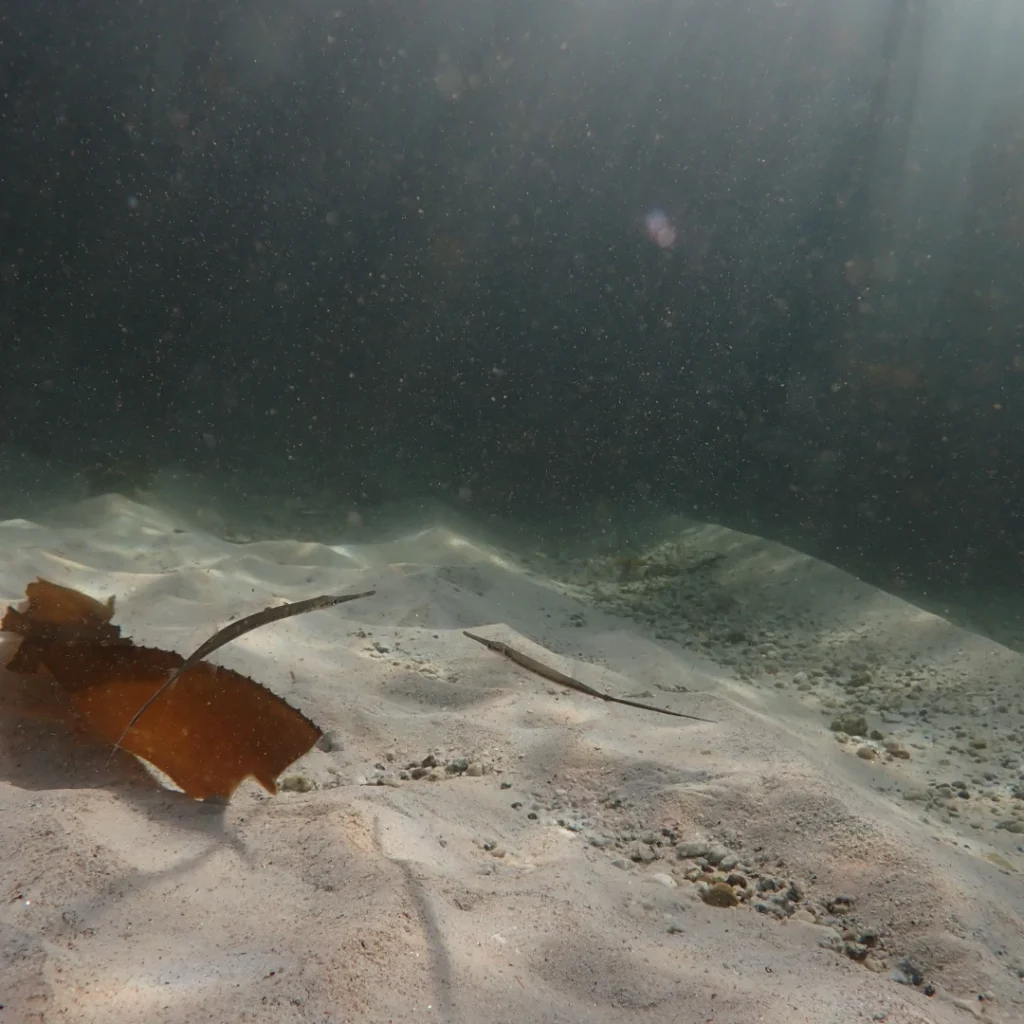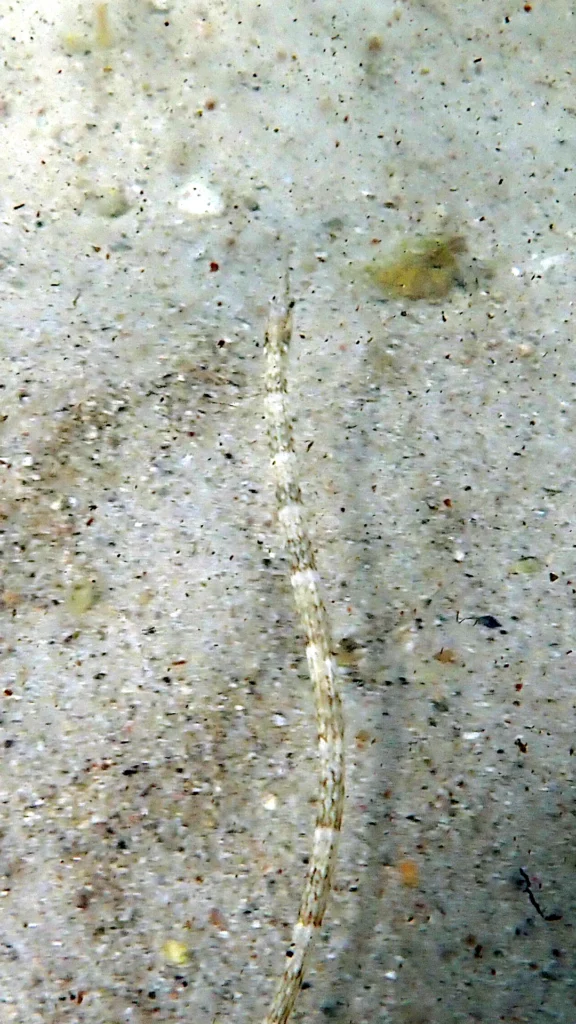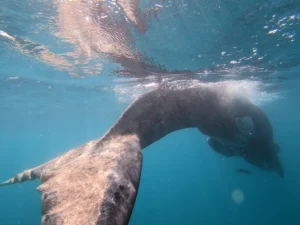As the name suggests, pipefish are small, elongated creatures, with close resemblance to their seahorse and sea dragon relatives, together forming the family Syngnathidae. Although unlike their relatives, pipefish have a long slender body covered in bony plates, ranging from 2 – 65 cm in length, with small nondescript fins. Pipefish are made up of a diverse group of 50 genera, consisting of 225 known species.

Found in tropical and temperate waters across the globe, pipefish primarily inhabit sheltered environments such as mangroves, estuaries, seagrass beds and coral reefs. We encounter these fascinating fish while snorkeling in very sheltered areas close to shore and tend to spot them over sandy areas where they are more easily discernible. Their close semblance to seagrass fronds allows them to exist cryptically within these environments, blending in to avoid predation. Some of the stronger-swimming species do also, however, exist in offshore habitats, at depths of up to 400m. As carnivores, pipefishes feed on small invertebrates, crustaceans, and zooplankton, with their pipe-like snout functioning much like a straw – enabling them to effectively target and ingest their prey.
As with seahorses, pipefish exhibit a unique breeding strategy whereby males play a significant role in reproduction, taking on the majority of parenting responsibilities. This adaptation is thought to have come about as a response to predation pressure, allowing the male to protect the eggs for a prolonged period of time. Once the eggs are transferred from the female, the male pipefish provide extensive postzygotic care for their offspring, including supplying nutrients and oxygen through a structure akin to a placenta. This care is facilitated through a specialised brood pouch. After hatching, pipefish are entirely independent, either as larvae or miniature versions of their parents, depending on the species. Some pipefish species are monogamous, with long-lasting partnerships thought to contribute to the overall population stability and reproductive success.

While pipefish are not as well-known as seahorses, they face similar conservation challenges. Species that are found in nearshore environments face significant threats, as these habitats are often readily disturbed by human activity. Furthermore, pipefish are directly targeted for use in Traditional Chinese Medicine, and increasingly sought out for the aquarium trade. A combination of these threats has resulted in a number of species in the Syngnathinae family classified by the International Union for Conservation of Nature (IUCN) as critically endangered, endangered and vulnerable.
Pipefish are fascinating creatures that fulfil specific niches within marine environments and as indicated by their conservation status, are sensitive to disturbance. This underscores the importance of safeguarding their habitats and promoting sustainable practices in order to aid in the conservation of these significant species.



